10 Most Famous English Poets of All Time
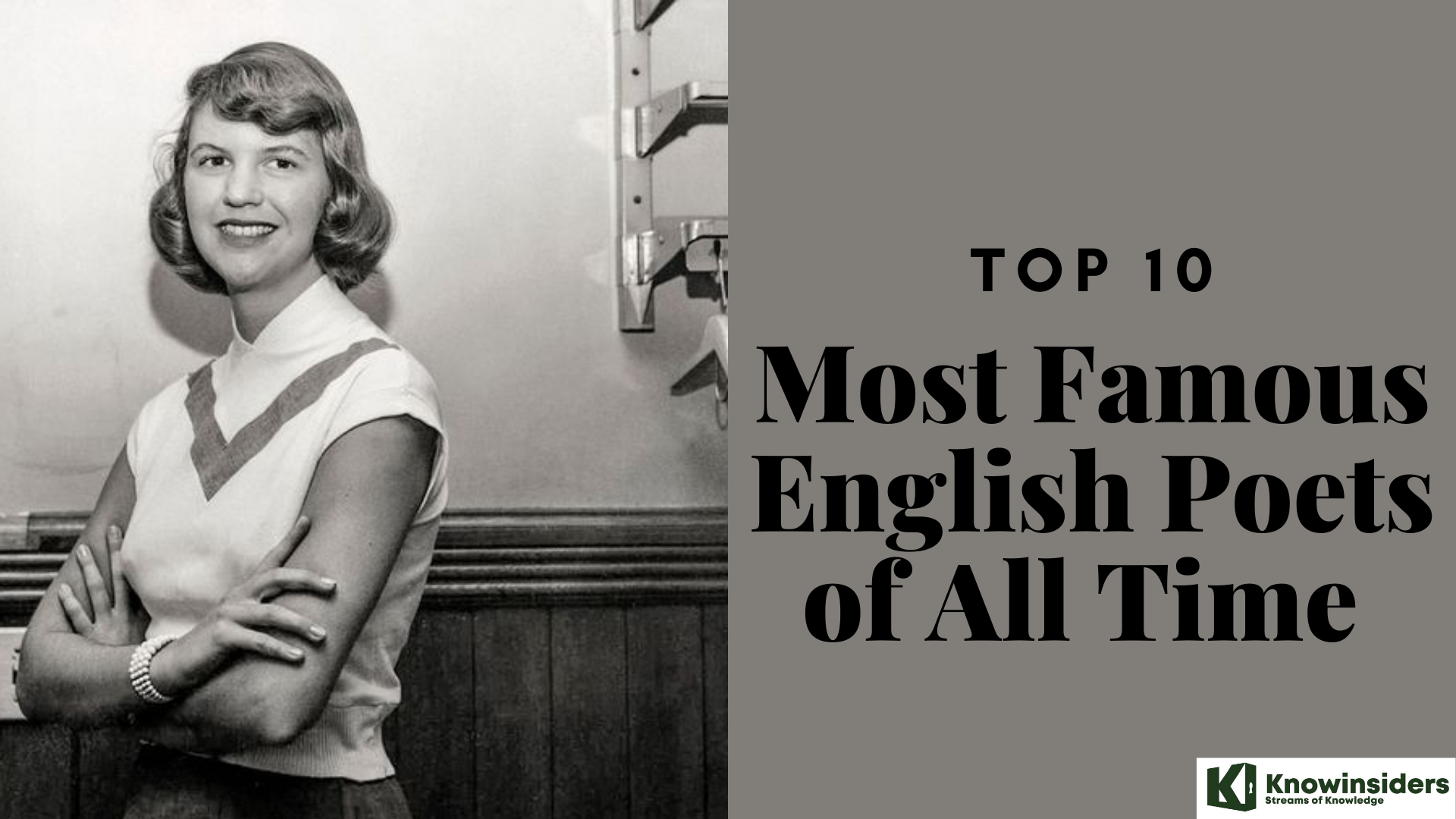 |
| The Top 10 Most Famous English Poets of All Time |
| Table Content |
The work of a poet is beautiful, delicate, simple yet complex, and some of them left their marks forever in the history of literature.
Writing is a beautiful work, so as the writers, novelists and especially, poets. It is not easy to convey all thoughts, emotions and opinions into a few sentences and words, and yet make all the pieces rhythm in the ears. The best of poems and poets are read throughout the ages. They are read from generation to generation and taught throughout school to young students. Poets and their poetry have the ability to take us places and into the lives of those we’ve never imagined. Poets are often tortured souls or great thinkers who show readers a new view of the world they never would have imagined.
After looking through multiple sources, social media and literature websites, we have compiled a list of top 10 most famous English poets of all time, in which their works are still used in teaching and researching in school, university nowadays.
List of top 10 most famous English poets of all time
10. Charles Dickens
9. Robert Browning
8. T.S. Eliot
7. John Milton
6. John Donne
5. Oscar Wilde
4. Sylvia Plath
3. John Keats
2. William Blake
1. William Shakespeare
***
Who are the most famous English poets of all time?
(Biography source: Poetry Foundation , Poets.org)
10. Charles Dickens
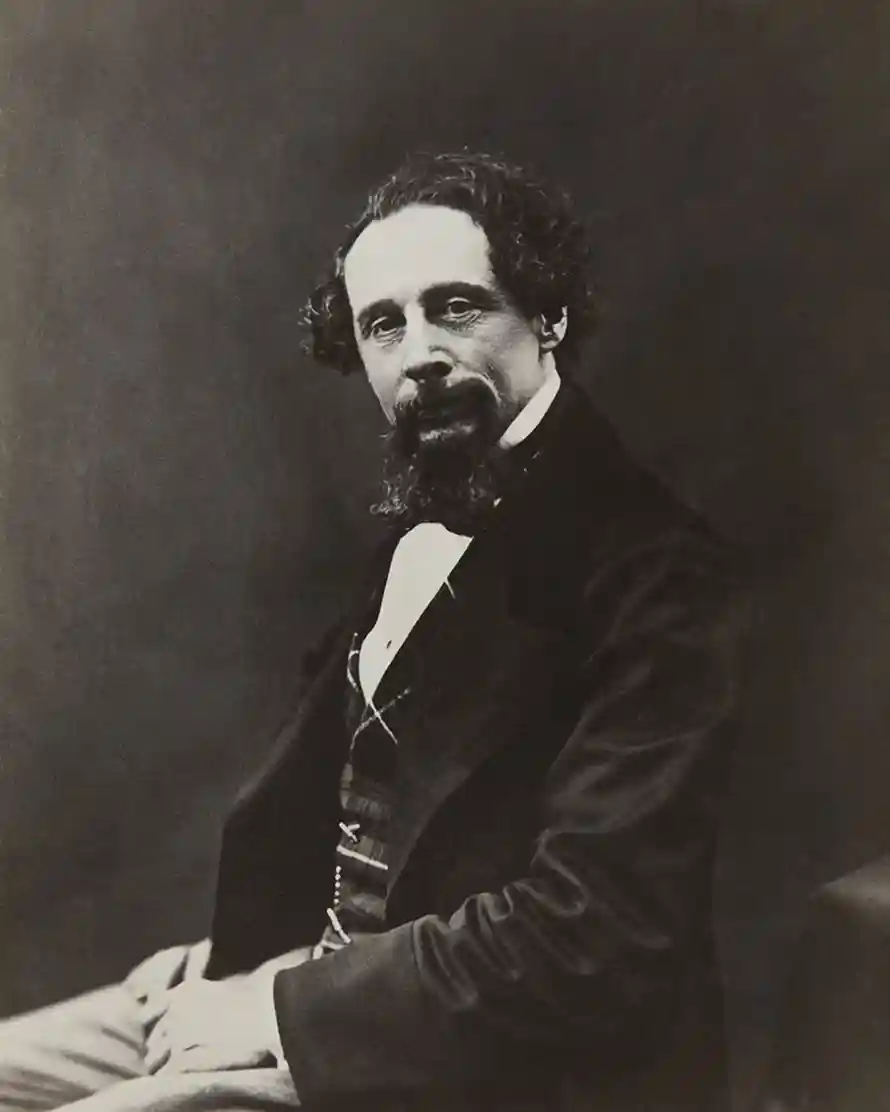 |
| Photo: The Guardian |
Charles Dickens was born on February 7, 1812, the son of a clerk at the Navy Pay Office. His father, John Dickens, continually living beyond his means, was imprisoned for debt in the Marshalsea in 1824. 12-year-old Charles was removed from school and sent to work at a boot-blacking factory earning six shillings a week to help support the family.
This dark experience cast a shadow over the clever, sensitive boy that became a defining experience in his life, he would later write that he wondered "how I could have been so easily cast away at such an age."
This childhood poverty and feelings of abandonment, although unknown to his readers until after his death, would be a heavy influence on Dickens' later views on social reform and the world he would create through his fiction.
Dickens would go on to write 15 major novels including, Oliver Twist, Bleak House, Great Expectations, A Tale of Two Cities, and his personal favorite, David Copperfield. He will forever be associated with the celebration of Christmas due to his Christmas Books, the most popular being A Christmas Carol. Dickens also edited, and contributed to, weekly journals Household Words and All the Year Round. Near the end of his life he traveled throughout Britain and America giving public readings of his work.
Charles Dickens died an old man of 57, worn out with work and travel, on June 9, 1870. He wished to be buried, without fanfare, in a small cemetery in Rochester, Kent, but the Nation would not allow it. He was laid to rest in Poet's Corner, Westminster Abbey, the flowers from thousands of mourners overflowing the open grave. Among the more beautiful bouquets were many simple clusters of wildflowers, wrapped in rags.
9. Robert Browning
Browning was born on May 7, 1812 in Camberwell, a middle-class suburb of London. He was the only son of Robert Browning, a clerk in the Bank of England, and a devoutly religious German-Scotch mother, Sarah Anna Wiedemann Browning. He had a sister, Sarianna, who like her parents was devoted to Browning. While Mrs. Browning’s piety and love of music are frequently cited as important influences on the poet’s development, his father’s scholarly interests and unusual educational practices may have been equally significant. The son of a wealthy banker, Robert Browning the elder had been sent in his youth to make his fortune in the West Indies, but he found the slave economy there so distasteful that he returned, hoping for a career in art and scholarship. A quarrel with his father and the financial necessity it entailed led the elder Browning to relinquish his dreams so as to support himself and his family through his bank clerkship.
Browning’s early career has been characterized by Ian Jack as a search for an appropriate poetic form, and his first published effort, Pauline: A Fragment of a Confession (1833), proved in retrospect to be a false start. Browning’s next poetic production, Paracelsus (1835), achieved more critical regard and began to move toward the greater objectivity of the dramatic monologue form that Browning perfected over the next several years. Browning also wrote several plays intended for the stage, along with closet dramas; however, he was not suited to be a playwright. His chief theatrical patron, William Macready, was already becoming disillusioned by the plays’ lack of success and the poet’s persistent difficulties in creating theatrical plots.
Before that estrangement, however, the alliance between Browning and Macready had one salutary effect: it provided the occasion for Browning’s composition of “The Pied Piper.” In May 1842 Macready’s son Willie was sick in bed; Willie liked to draw and asked Browning to give him “some little thing to illustrate” while in confinement. The poet responded first with a short poem, “The Cardinal and the Dog,” and then, after being impressed with Willie’s drawings for it, with “The Pied Piper of Hamelin.” The story of the Pied Piper was evidently well known in Browning’s home. The poet’s father began his own poem on the subject in 1842 for another young family friend, discontinuing his effort when he learned of his son’s poem. The primary source of the story was a 17th-century collection, Nathaniel Wanley’s Wonders of the Little World (1678). Browning claimed many years later that this was the sole source, but William Clyde DeVane notes that some significant details in Browning’s account, including an erroneous date for the event described, occur in an earlier work, Richard Verstegen’s Restitution of Decayed Intelligence in Antiquities (1605), but not in Wanley.
Browning wrote relatively little during the marriage, in part because the family frequently moved and, because of Elizabeth’s frail health, he was usually busy making all the arrangements for housing and transportation. The Brownings had one child, Robert Wiedemann Barrett Browning, called “Pen,” born in 1849 (the same year Browning’s mother died). Both parents doted on the boy, and Robert Browning took particular responsibility for his son’s education—yet another diversion from poetic production. The poet who some years earlier had produced a major children’s poem to amuse the son of a friend made no similar creations for his own son, however, but continued to work on longer philosophical poems for an adult audience.
Browning became in his later years that curious phenomenon, the Victorian sage—widely regarded for his knowledge and his explorations of philosophical questions of great resonance in Victorian life. He witnessed the creation (by F.J. Furnivall in 1881) of the Browning Society, dedicated to the study of the poet’s work and thought. Just before his death in 1889, Browning finally published the other poem written for young Willie Macready, “The Cardinal and the Dog.” This 15-line poem, like “The Pied Piper,” originated in one of the legends recounted in Wanley’s Wonders of the Little World. It tells how Cardinal Crescenzio, a representative of the pope at the Council of Trent, was frightened by the apparition of a large black dog that only he could see, after which he became seriously ill; on his deathbed he again saw the dog. The poem has elicited little critical response and has seldom been anthologized; its interest today lies primarily in its role as a warm-up to “The Pied Piper.”
Anyone as widely adulated as Browning was during the later years of his life is bound to suffer a decline in critical valuation. Along with other Victorians, Browning was dismissed by influential figures among the modernists, including T.S. Eliot (although Ezra Pound paid tribute to Browning as one of his literary fathers). Following World War II, however, Browning’s reputation has been salvaged by a more objective generation of critics who note his poetic failings but also trace his influence on the poetic forms and concerns of his 20th-century successors. Through all the vicissitudes of critical reputation, however, Browning’s major contribution to the canon of children’s literature, “The Pied Piper of Hamelin,” has retained its popular audience.
At the time of his death in 1889, he was one of the most popular poets in England.
8. T.S. Eliot
 |
| Photo: Poetry Foundation |
Thomas Stearns Eliot OM (26 September 1888 – 4 January 1965) was a poet, essayist, publisher, playwright, literary critic and editor. Considered one of the 20th century's major poets, he is a central figure in English-language Modernist poetry.
Born in St. Louis, Missouri, to a prominent Boston Brahmin family, he moved to England in 1914 at the age of 25 and went on to settle, work, and marry there. He became a British citizen in 1927 at the age of 39, subsequently renouncing his American citizenship.
Eliot first attracted widespread attention for his poem "The Love Song of J. Alfred Prufrock" in 1915, which was received as a modernist masterpiece. It was followed by some of the best-known poems in the English language, including "The Waste Land" (1922), "The Hollow Men" (1925), "Ash Wednesday" (1930), and Four Quartets (1943). He was also known for his seven plays, particularly Murder in the Cathedral (1935) and The Cocktail Party (1949). He was awarded the Nobel Prize in Literature in 1948, "for his outstanding, pioneer contribution to present-day poetry".
Eliot died of emphysema at his home in Kensington in London, on 4 January 1965, and was cremated at Golders Green Crematorium. In accordance with his wishes, his ashes were taken to St Michael and All Angels' Church, East Coker, the village in Somerset from which his Eliot ancestors had emigrated to America. A wall plaque in the church commemorates him with a quotation from his poem East Coker: "In my beginning is my end. In my end is my beginning."
In 1967, on the second anniversary of his death, Eliot was commemorated by the placement of a large stone in the floor of Poets' Corner in London's Westminster Abbey. The stone, cut by designer Reynolds Stone, is inscribed with his life dates, his Order of Merit, and a quotation from his poem Little Gidding, "the communication / of the dead is tongued with fire beyond / the language of the living."
In 1986, a blue plaque was placed on the apartment block - No. 3 Kensington Court Gardens - where he lived and died.
7. John Milton
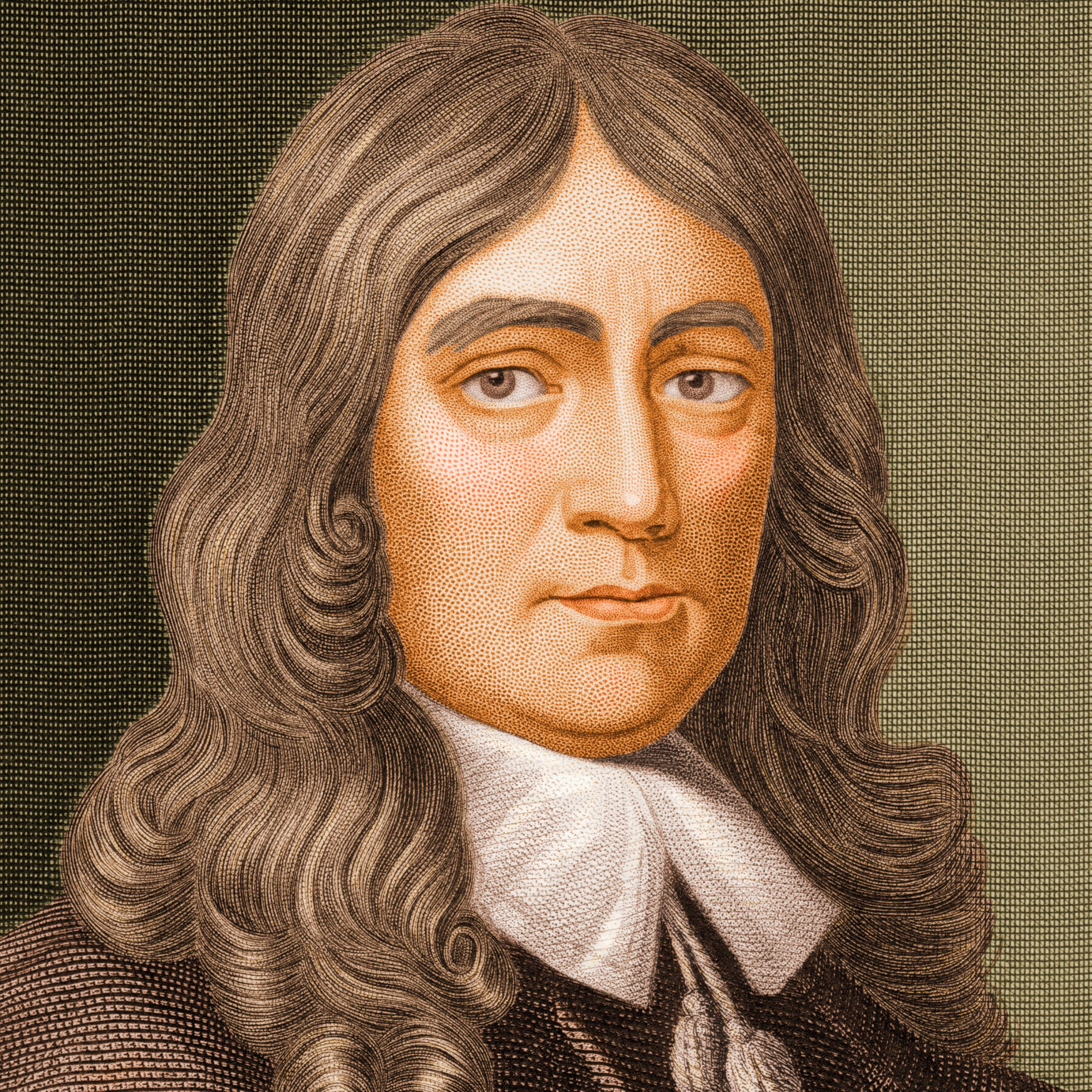 |
| Photo: Getty Images |
John Milton’s career as a writer of prose and poetry spans three distinct eras: Stuart England; the Civil War (1642-1648) and Interregnum, including the Commonwealth (1649-1653) and Protectorate (1654-1660); and the Restoration. Milton’s chief polemical prose was written in the decades of the 1640s and 1650s, during the strife between the Church of England and various reformist groups such as the Puritans and between the monarch and Parliament. Designated the antiepiscopal or antiprelatical tracts and the antimonarchical or political tracts, these works advocate a freedom of conscience and a high degree of civil liberty for humankind against the various forms of tyranny and oppression, both ecclesiastical and governmental. In line with his libertarian outlook, Milton wrote Areopagitica (1644), often cited as one of the most compelling arguments on the freedom of the press. In March 1649 Milton was appointed secretary for foreign tongues to the Council of State. His service to the government, chiefly in the field of foreign policy, is documented by official correspondence, the Letters of State, first published in 1694. Milton vigorously defended Cromwell’s government in Eikonoklastes (1649), or Imagebreaker, which was a personal attack on Charles I likening him to William Shakespeare‘s duke of Gloucester (afterward Richard III), a consummate hypocrite. Up to the Restoration, Milton continued to write in defense of the Protectorate despite going blind by 1652. After Charles II was crowned, Milton was dismissed from governmental service, apprehended, and imprisoned. Payment of fines and the intercession of friends and family, including Andrew Marvell, Sir William Davenant, and perhaps Christopher Milton, his younger brother and a Royalist lawyer, brought about Milton’s release. In the troubled period at and after the Restoration he was forced to depart his home which he had occupied for eight years in Petty-France, Westminster. He took up residence elsewhere, including the house of a friend in Bartholomew Close; eventually, he settled in a home at Artillery Walk toward Bunhill Fields. On or about 8 November 1674, when he was almost sixty-six years old, Milton died of complications from gout.
Placing himself in a line of poets whose art was an outlet for their public voice and using, like them, the pastoral poem to present an outlook on politics, Milton aimed to promote an enlightened commonwealth, not unlike the polis of Greek antiquity or the cultured city-states in Renaissance Italy. In 1645 he published his first volume of poetry, Poems of Mr. John Milton , Both English and Latin, much of which was written before he was twenty years old. The volume manifests a rising poet, one who has planned his emergence and projected his development in numerous ways: mastery of ancient and modern languages—Greek, Latin, Hebrew, Italian; awareness of various traditions in literature; and avowed inclination toward the vocation of poet. The poems in the 1645 edition run the gamut of various genres: psalm paraphrase, sonnet, canzone, masque, pastoral elegy, verse letter, English ode, epigram, obituary poem, companion poem, and occasional verse. Ranging from religious to political in subject matter, serious to mock-serious in tone, and traditional to innovative in the use of verse forms, the poems in this volume disclose a self-conscious author whose maturation is undertaken with certain models in mind, notably Virgil from classical antiquity and Edmund Spenser in the English Renaissance. When one considers that the 1645 volume was published when Milton was approximately thirty-seven years old, though some of the poems were written as early as his fifteenth year, it is evident that he sought to draw attention to his unfolding poetic career despite its interruption by governmental service. Perhaps he also sought to highlight the relationship of his poetry to his prose and to call attention to his aspiration, evident in several works in the 1645 volume, to become an epic poet. Thus, the poems in the volume were composed in Stuart England but published after the onset of the English Civil War. Furthermore, Milton may have begun to compose one or more of his mature works—Paradise Lost, Paradise Regained, and Samson Agonistes—in the 1640s, but they were completed and revised much later and not published until after the Restoration.
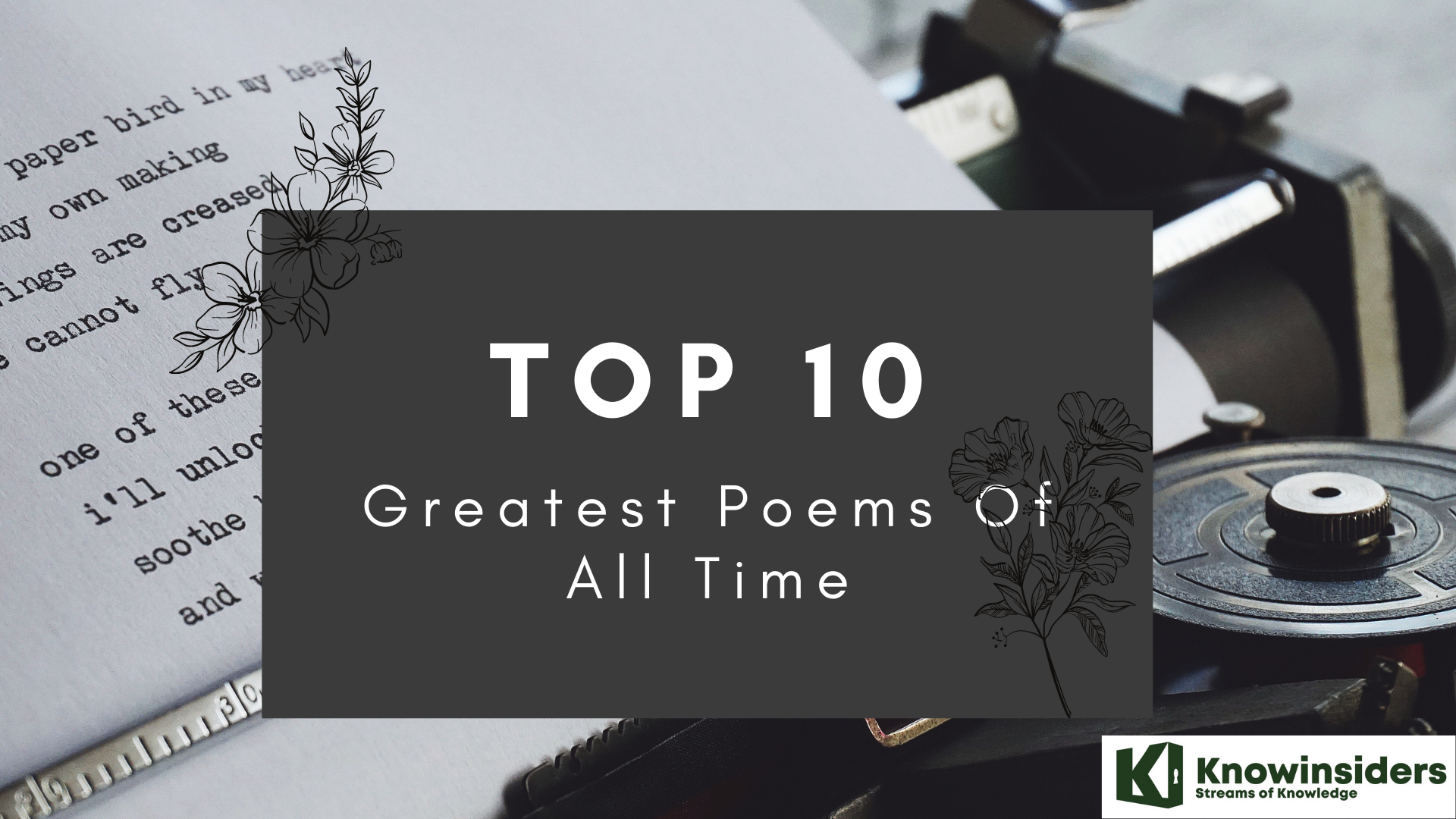 Top 10 Best and Greatest Poems In English Language Of All Time Top 10 Best and Greatest Poems In English Language Of All Time Poetry can be meaningful, rhythmic and it has a certain beauty to it. Find the top 10 best and greatest poems in English language of ... |
6. John Donne
The English writer and Anglican cleric John Donne is considered now to be the preeminent metaphysical poet of his time. He was born in 1572 to Roman Catholic parents, when practicing that religion was illegal in England. His work is distinguished by its emotional and sonic intensity and its capacity to plumb the paradoxes of faith, human and divine love, and the possibility of salvation. Donne often employs conceits, or extended metaphors, to yoke together “heterogenous ideas,” in the words of Samuel Johnson, thus generating the powerful ambiguity for which his work is famous. After a resurgence in his popularity in the early 20th century, Donne’s standing as a great English poet, and one of the greatest writers of English prose, is now assured.
The history of Donne’s reputation is the most remarkable of any major writer in English; no other body of great poetry has fallen so far from favor for so long. In Donne’s own day his poetry was highly prized among the small circle of his admirers, who read it as it was circulated in manuscript, and in his later years he gained wide fame as a preacher. For some 30 years after his death successive editions of his verse stamped his powerful influence upon English poets. During the Restoration his writing went out of fashion and remained so for several centuries. Throughout the 18th century, and for much of the 19th century, he was little read and scarcely appreciated. It was not until the end of the 1800s that Donne’s poetry was eagerly taken up by a growing band of avant-garde readers and writers. His prose remained largely unnoticed until 1919.
In the first two decades of the 20th century Donne’s poetry was decisively rehabilitated. Its extraordinary appeal to modern readers throws light on the Modernist movement, as well as on our intuitive response to our own times. Donne may no longer be the cult figure he became in the 1920s and 1930s, when T.S. Eliot and William Butler Yeats, among others, discovered in his poetry the peculiar fusion of intellect and passion and the alert contemporariness which they aspired to in their own art. He is not a poet for all tastes and times; yet for many readers Donne remains what Ben Jonson judged him: “the first poet in the world in some things.” His poems continue to engage the attention and challenge the experience of readers who come to him afresh. His high place in the pantheon of the English poets now seems secure.
Donne’s love poetry was written nearly 400 years ago; yet one reason for its appeal is that it speaks to us as directly and urgently as if we overhear a present confidence.
5. Oscar Wilde
Oscar Fingal O'Flahertie Wills Wilde (16 October 1854 – 30 November 1900) was an Irish poet and playwright. After writing in different forms throughout the 1880s, he became one of the most popular playwrights in London in the early 1890s. He is best remembered for his epigrams and plays, his novel The Picture of Dorian Gray, and the circumstances of his criminal conviction for gross indecency for consensual homosexual acts in "one of the first celebrity trials", imprisonment, and early death from meningitis at age 46.
Wilde's parents were Anglo-Irish intellectuals in Dublin. A young Wilde learned to speak fluent French and German. At university, Wilde read Greats; he demonstrated himself to be an exceptional classicist, first at Trinity College Dublin, then at Oxford. He became associated with the emerging philosophy of aestheticism, led by two of his tutors, Walter Pater and John Ruskin. After university, Wilde moved to London into fashionable cultural and social circles.
As a spokesman for aestheticism, he tried his hand at various literary activities: he published a book of poems, lectured in the United States and Canada on the new "English Renaissance in Art" and interior decoration, and then returned to London where he worked prolifically as a journalist. Known for his biting wit, flamboyant dress and glittering conversational skill, Wilde became one of the best-known personalities of his day. At the turn of the 1890s, he refined his ideas about the supremacy of art in a series of dialogues and essays, and incorporated themes of decadence, duplicity, and beauty into what would be his only novel, The Picture of Dorian Gray (1890). The opportunity to construct aesthetic details precisely, and combine them with larger social themes, drew Wilde to write drama. He wrote Salome (1891) in French while in Paris but it was refused a licence for England due to an absolute prohibition on the portrayal of Biblical subjects on the English stage. Unperturbed, Wilde produced four society comedies in the early 1890s, which made him one of the most successful playwrights of late-Victorian London.
At the height of his fame and success, while The Importance of Being Earnest (1895) was still being performed in London, Wilde prosecuted the Marquess of Queensberry for criminal libel. The Marquess was the father of Wilde's lover, Lord Alfred Douglas. The libel trial unearthed evidence that caused Wilde to drop his charges and led to his own arrest and trial for gross indecency with men. After two more trials he was convicted and sentenced to two years' hard labour, the maximum penalty, and was jailed from 1895 to 1897. During his last year in prison, he wrote De Profundis (published posthumously in 1905), a long letter which discusses his spiritual journey through his trials, forming a dark counterpoint to his earlier philosophy of pleasure. On his release, he left immediately for France, and never returned to Ireland or Britain. There he wrote his last work, The Ballad of Reading Gaol (1898), a long poem commemorating the harsh rhythms of prison life.
4. Sylvia Plath
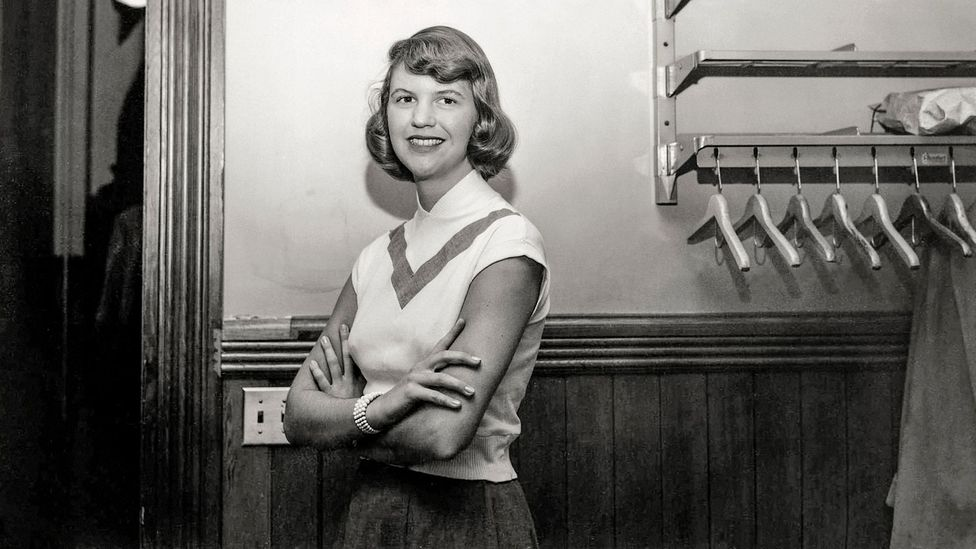 |
| Photo: BBC |
Sylvia Plath was born on October 27, 1932, in Boston, Massachusetts. Her mother, Aurelia Schober, was a master’s student at Boston University when she met Plath’s father, Otto Plath, who was her professor. They were married in January of 1932. Otto taught both German and biology, with a focus on apiology, the study of bees.
In 1940, when Plath was eight years old, her father died as a result of complications from diabetes. He had been a strict father, and both his authoritarian attitudes and his death drastically defined Plath's relationships and her poems—most notably in her elegiac and infamous poem "Daddy."
Plath kept a journal from the age of eleven and published her poems in regional magazines and newspapers. Her first national publication was in the Christian Science Monitor in 1950, just after graduating from high school.
In 1950, Plath matriculated at Smith College, where she graduated summa cum laude in 1955.
After graduation, Plath moved to Cambridge, England, on a Fulbright Scholarship. In early 1956, she attended a party and met the English poet Ted Hughes. Shortly thereafter, Plath and Hughes were married, on June 16, 1956.
Plath returned to Massachusetts in 1957 and began studying with Robert Lowell. Her first collection of poems, Colossus, was published in 1960 in England, and two years later in the United States. She returned to England, where she gave birth to her children Frieda and Nicholas, in 1960 and 1962, respectively.
In 1962, Ted Hughes left Plath for Assia Gutmann Wevill. That winter, Plath wrote most of the poems that would comprise her most famous book, Ariel.
In 1963, Plath published a semi-autobiographical novel, The Bell Jar, under the pseudonym Victoria Lucas. She died on February 11 of that year.
Plath’s poetry is often associated with the Confessional movement, and compared to the work of poets such as Lowell and fellow student Anne Sexton. Often, her work is singled out for the intense coupling of its violent or disturbed imagery and its playful use of alliteration and rhyme.
3. John Keats
 |
| Photo: Getty Images |
John Keats was born in London on 31 October 1795, the eldest of Thomas and Frances Jennings Keats’s four children. Although he died at the age of twenty-five, Keats had perhaps the most remarkable career of any English poet. He published only fifty-four poems, in three slim volumes and a few magazines. But over his short development he took on the challenges of a wide range of poetic forms from the sonnet, to the Spenserian romance, to the Miltonic epic, defining anew their possibilities with his own distinctive fusion of earnest energy, control of conflicting perspectives and forces, poetic self-consciousness, and, occasionally, dry ironic wit.
Although he is now seen as part of the British Romantic literary tradition, in his own lifetime Keats would not have been associated with other major Romantic poets, and he himself was often uneasy among them. Outside his friend Leigh Hunt‘s circle of liberal intellectuals, the generally conservative reviewers of the day attacked his work as mawkish and bad-mannered, as the work of an upstart “vulgar Cockney poetaster” (John Gibson Lockhart), and as consisting of “the most incongruous ideas in the most uncouth language” (John Wilson Croker). Although Keats had a liberal education in the boy’s academy at Enfield and trained at Guy’s Hospital to become a surgeon, he had no formal literary education. Yet Keats today is seen as one of the canniest readers, interpreters, questioners, of the “modern” poetic project-which he saw as beginning with William Wordsworth—to create poetry in a world devoid of mythic grandeur, poetry that sought its wonder in the desires and sufferings of the human heart. Beyond his precise sense of the difficulties presented him in his own literary-historical moment, he developed with unparalleled rapidity, in a relative handful of extraordinary poems, a rich, powerful, and exactly controlled poetic style that ranks Keats, with the William Shakespeare of the sonnets, as one of the greatest lyric poets in English.
2. William Blake
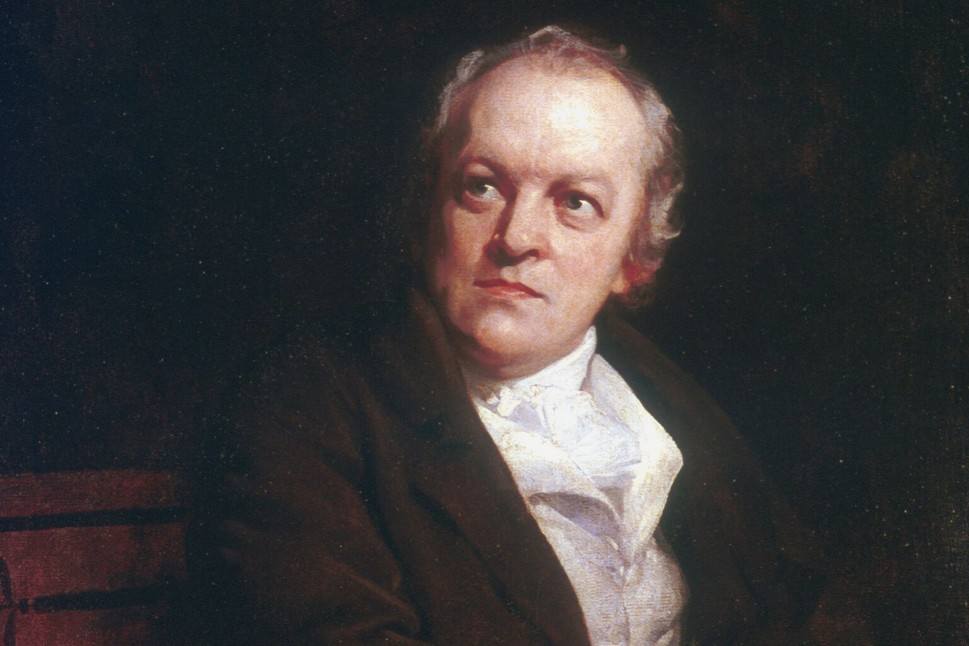 |
| Photo: World History Archive / Alamy Stock Photo |
Blake was born on November 28, 1757. Unlike many well-known writers of his day, Blake was born into a family of moderate means. His father, James, was a hosier, and the family lived at 28 Broad Street in London in an unpretentious but “respectable” neighborhood. In all, seven children were born to James and Catherine Wright Blake, but only five survived infancy. Blake seems to have been closest to his youngest brother, Robert, who died young.
Poet, painter, engraver, and visionary William Blake worked to bring about a change both in the social order and in the minds of men. Though in his lifetime his work was largely neglected or dismissed, he is now considered one of the leading lights of English poetry, and his work has only grown in popularity. In his Life of William Blake (1863) Alexander Gilchrist warned his readers that Blake “neither wrote nor drew for the many, hardly for work’y-day men at all, rather for children and angels; himself ‘a divine child,’ whose playthings were sun, moon, and stars, the heavens and the earth.” Yet Blake himself believed that his writings were of national importance and that they could be understood by a majority of his peers. Far from being an isolated mystic, Blake lived and worked in the teeming metropolis of London at a time of great social and political change that profoundly influenced his writing. In addition to being considered one of the most visionary of English poets and one of the great progenitors of English Romanticism, his visual artwork is highly regarded around the world.
1. William Shakespeare
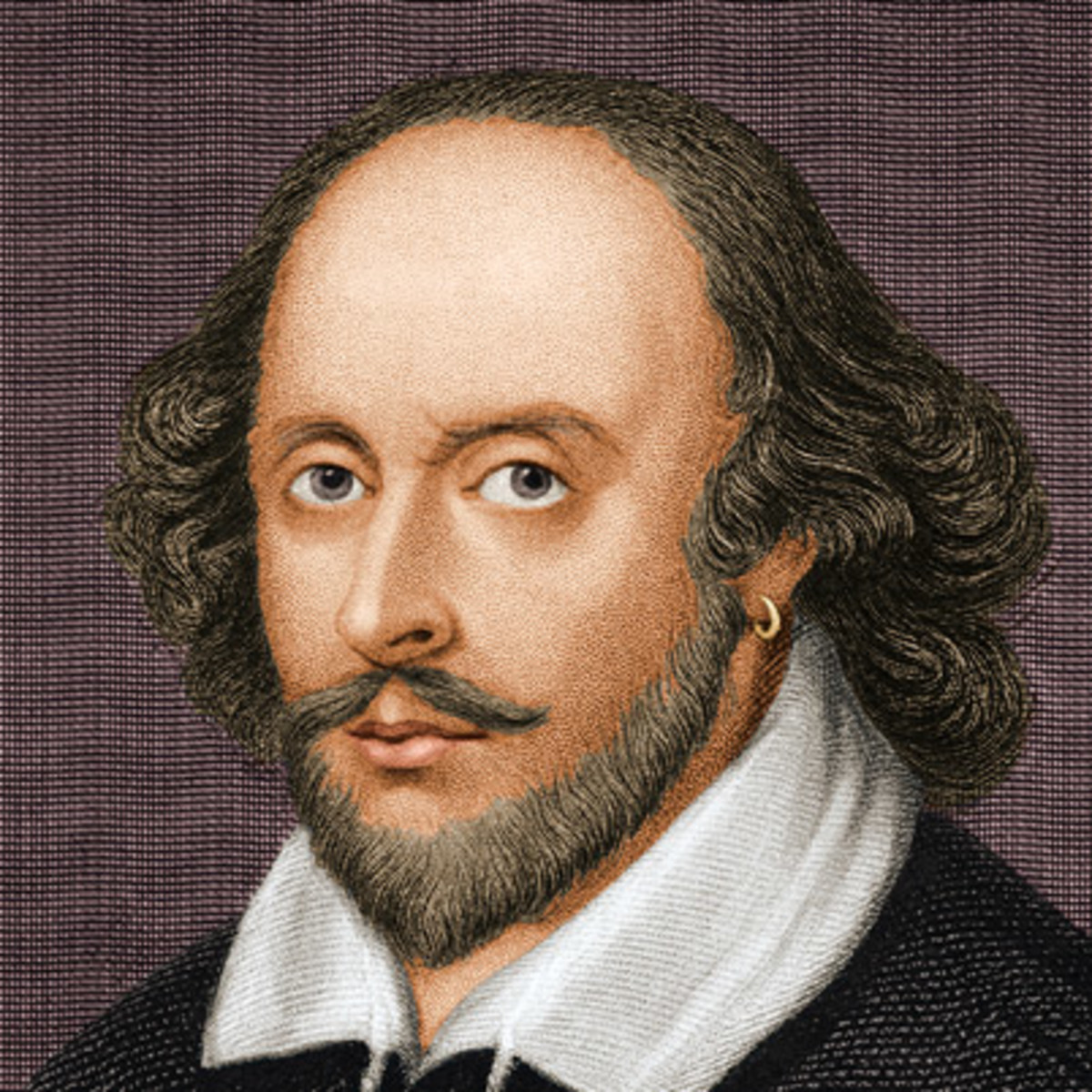 |
| Photo: Biography |
William Shakespeare was a renowned English poet, playwright, and actor born in 1564 in Stratford-upon-Avon. His birthday is most commonly celebrated on 23 April (see When was Shakespeare born), which is also believed to be the date he died in 1616.
Shakespeare was a prolific writer during the Elizabethan and Jacobean ages of British theatre (sometimes called the English Renaissance or the Early Modern Period). Shakespeare’s plays are perhaps his most enduring legacy, but they are not all he wrote. Shakespeare’s poems also remain popular to this day.
Altogether Shakespeare's works include 38 plays, 2 narrative poems, 154 sonnets, and a variety of other poems. No original manuscripts of Shakespeare's plays are known to exist today. It is actually thanks to a group of actors from Shakespeare's company that we have about half of the plays at all. They collected them for publication after Shakespeare died, preserving the plays. These writings were brought together in what is known as the First Folio ('Folio' refers to the size of the paper used). It contained 36 of his plays, but none of his poetry.
Shakespeare’s legacy is as rich and diverse as his work; his plays have spawned countless adaptations across multiple genres and cultures. His plays have had an enduring presence on stage and film. His writings have been compiled in various iterations of The Complete Works of William Shakespeare, which include all of his plays, sonnets, and other poems. William Shakespeare continues to be one of the most important literary figures of the English language.
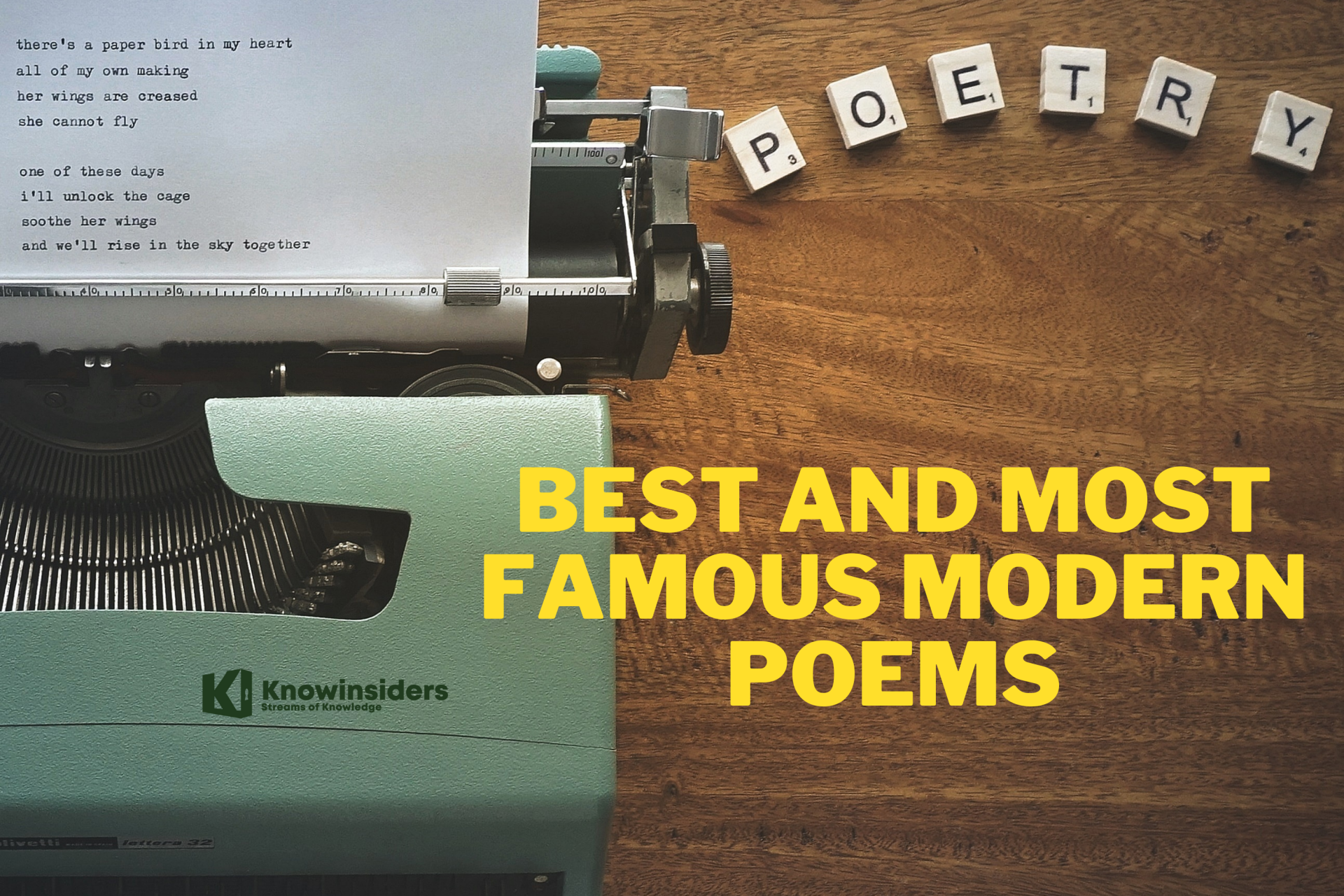 Top 10 Best And Most Famous Modern Poems Top 10 Best And Most Famous Modern Poems What are the best and most famous modern poems? Let's find out in the list below! |
 Top 10 Best Classic Poems For New Year Top 10 Best Classic Poems For New Year Have you ever tried reading classic poems on New Year holiday? Let’s explore Top 10 Famous Classic Poems For New Year. |
 Top 10 Romantic Cities in Canada Top 10 Romantic Cities in Canada Check out KnowInsider's list of the 10 most romantic cities in Canada, which are great for any type of getaway with your better half, whether ... |
 Top 10 Most Romantic Cities in India Top 10 Most Romantic Cities in India To know more about top 10 most romantic cities in India for love getaways, keep reading the article below. |


























